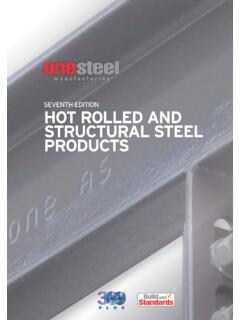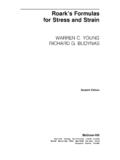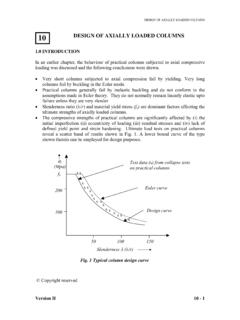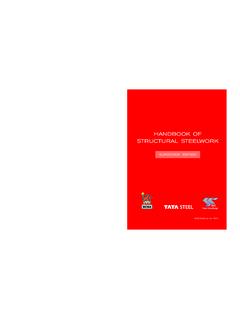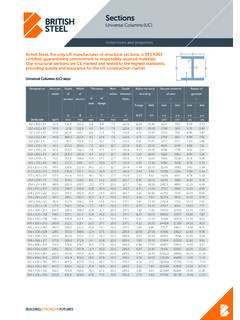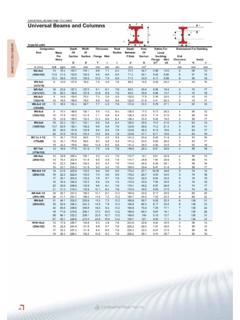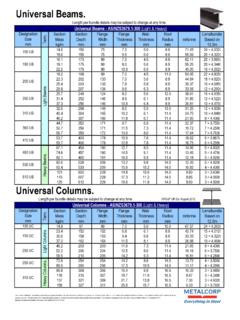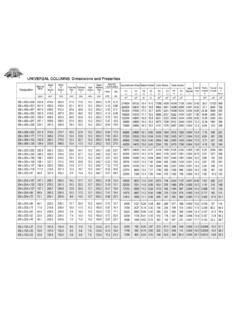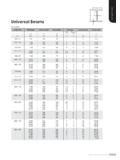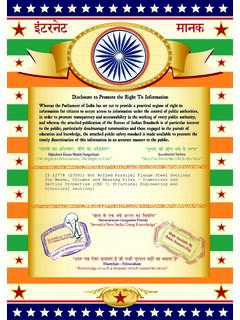Transcription of TRUSSES - HOW THEY WORK
1 GANG-NAIL Truss System TRUSSES - HOW THEY WORK In the evolution of building there have been two great developments since man first used timber or stone to provide himself with shelter. These materials were first used as simple beams. The Romans are credited with the invention of the arch, and the truss was developed in Europe during the middle ages. A beam supports loads due to its bending strength. This is the way simple members such as rafters, battens, purlins, lintels and bressummers work. The top edge of a beam is normally in compression and the bottom edge in tension.
2 These stresses reach a maximum near the middle of the beam s span and for every doubling of span the strength of the beam must increase four times. Beams also tend to sag when loaded and sag is even more sensitive to increases in span than the requirement for increased strength. Timber Arch Gang-Nail TRUSSES are based on these simple structures. All the truss members are timber, and the joints between the members are formed using Gang-Nail connector plates. The Romans found that if they leant stones against one-another in the shape of an arch, they could span greater distances than by using the stone as simple lintels or beams.
3 In an arch the stones are in compression. The arch will perform as long as the supports or buttresses at each end of the arch provide restraint, and do not spread apart. Timber beams can also be propped against one-another to form arches. The timber members will be in compression and will also act as simple beams. Single Truss with Arched Rafter and Tie The characteristic appearance of a truss is a framework formed by many small triangles. A triangle is a naturally stable shape, compared with say a rectangular framework which can be deformed unless its joints are rigid or it is braced from corner to corner.
4 Such a brace would, of course, convert a rectangle into two connected triangles on a truss. The members forming the perimeter of a truss the chords usually act as beams as well as ties or struts. The shorter the distance between truss joints, the smaller the chord section required. Roman Arch Bridge To turn the arch into a truss, all that is required is to provide a tie between the two buttresses to stop them from being pushed apart by the arch. The arch, beam , tie combinations is self-supporting we call this structure a truss. 10 GANG-NAIL Truss System Common A Type Gang-Nail Truss However, the more joints there are in the truss, the more expensive it is to fabricate.
5 The designer of a truss can choose the arrangement of the chords and webs and must balance structural efficiency against manufacturing efficiency in supporting the applied loads. 11 GANG-NAIL Truss System BASIC TRUSS MECHANICS All TRUSSES in a roof structure are designed for the worst possible combination of dead, live and wind loads. The individual truss members are designed to restrain the corresponding forces , tension or compression, or a combination of bending with either the tension or compression force. Tension (pulling). With this type of force the member being pulled or subjected to a tension force is said to be in tension.
6 The ability of a member to restrain tension forces depends on the material strength of the member and its cross-sectional area. However, if we rigidly support the 2400 mm long column in the previous example at the centre, it would then be capable of withstanding the one tonne force. The example shows that if the cross-sectional area of a member is doubled, the ability of that member to restrain the tension forces is also doubled. Compression (pushing). When a structural member is subjected to this type of force it is sometimes referred to as a column.
7 Unlike a tension member, the ability of a column to restrain compression forces is not simply a function of the cross-sectional area, but a combination of the material strength, the column length and the cross-sectional shape of the column. If one tonne is the maximum compression force that can be supported by a piece of 100 x 38 mm timber, 1200 mm long without buckling, then the same force applied to a piece of 100 x 38 mm timber, but twice as long, would certainly cause it to buckle and possibly collapse. Where this rigid support is applied to a web member, it is called a web tie, which is used in conjunction with bracing.
8 (See Figure 5A) 12 GANG-NAIL Truss System Bending force, or more correctly bending moment, is the result of a force applied to a cantilever, for example: a diving board, or to a simple beam . Battens with bracing from the rigid supports are needed to restrain the truss chords from buckling sideways. (See Figure 5b). he strength of a column is also dependent on the cross-sectional shape of a column. The squarer or example of 100 x 25 member having a cross sectional area of 2500 mm is not as strong The load carrying capacity of a beam is dependent upon the strength of the material and also the cross-sectional shape of the beam .
9 In the case of the beam , unlike the column, the deeper section having the same cross-sectional area will be the stronger member in bending. Beams subject to bending moments also require lateral restraints, as with columns . The deeper the beam the greater number of restraints required. T more symmetrical the shape, the stronger the column, given that the cross-sectional area is the same. In the in compression as a 50 x 50 member, provided that the other factors of length and material strength are equal. 13 GANG-NAIL Truss System Forces in Members.
10 Figure 10a 350 x 75 OREGON beam In many common types of TRUSSES it is possible to identify the type of force which is in any particular member without undertaking any calculations. The example in figure 9 is a common A type gable truss with a uniformly distributed load along the top and bottom chords. This is due to the transfer of the load of the tiles through the tile battens and the ceiling load through the ceiling battens. This means that the chords are subjected to bending forces as well as compression and tension forces.
